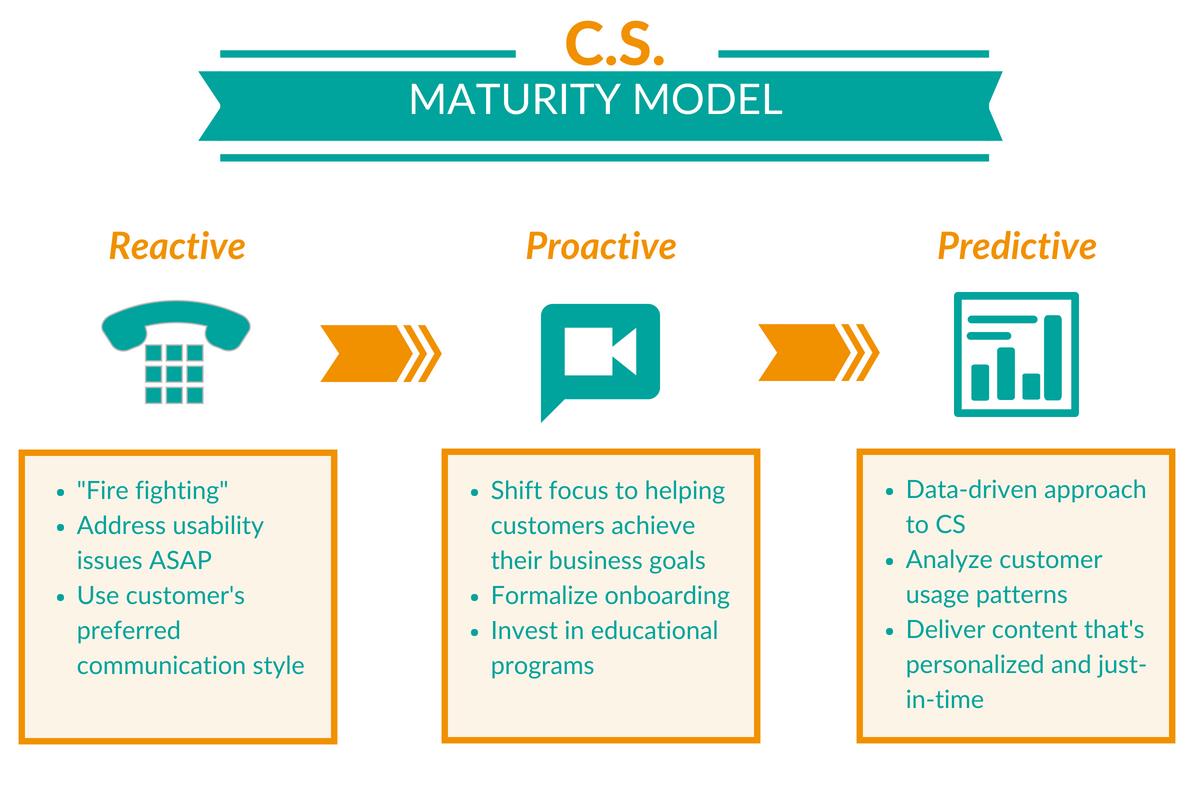The 3 Stages Of Maturity In New-Age SaaS Customer Success Organizations
By Victoria Vessella, Repsly

Any profitable software company knows the value of a strong customer success (CS) organization. Consider this statistic from Bain & Co., which reports that just a 5 percent increase in customer retention rates could potentially yield profit increases anywhere from 25 to 95 percent. We’re living in the age of the customer, and SaaS companies in particular are dependent on their users’ loyalty and advocacy to help drive revenue.
Historically, CS has been synonymous with customer support (a.k.a. firefighting). Nowadays, CS goes beyond support to include initiatives around adoption, education, and expansion, always with the aim of helping customers achieve their business goals.
But the “when” and “how” of specific programs a CS organization implements are contingent on its own maturity level. At Repsly, we’ve created a vision for our own CS team that’s comprised of three stages, each of which focuses on being best-in-class.
The Breakdown
Repsly is a B2B SaaS company that serves clients with field-based teams. Its field team management software is used by brands like Canon, illy, and Adidas and is deployed in over 70 countries globally.
As the company has grown since its inception in 2008, a CS organization has taken shape as a critical function for managing Repsly’s more than 1,000 clients. The company’s VP of Customer Success, Matthew DePaolis, has strategically added team members and introduced programs to help advance his department through its three stages of maturity.
These three stages are namely reactive, proactive, and predictive. This maturity model requires the CS team become best-in-class at each stage before moving on to the next.

Below we’ll explore the components of each stage, and what companies need to accomplish in order to advance on to the next.
The Past: Reactive
Over the past few decades, companies across industries have developed reactive customer care. At this stage in the model, CS teams are focused on fixing problems rather than educating customers on how to utilize the tool at its fullest capacity.
Addressing usability issues as soon as possible is a cornerstone of the reactive stage. Sometimes this means developers getting up in the middle of the night to fix a bug flagged by a user on another continent.
Besides “hard” technical skills, being best-in-class at reactive customer care also requires “soft” people skills. CS team members need the necessary product knowledge to combat whatever issue the user is experiencing, but also the communication skills to discover the root cause of the problem instead of just applying a temporary patch.
Equally important as a well-balanced skill set, effective reactive customer care takes an adaptive approach to customers’ communication styles. Such have evolved over the years, migrating away from phone and email to in-app and social media-based support.
DePaolis notes the importance of geography in regards to communication preferences. In the UK, for example, customers expect meetings to take place in person, particularly during the onboarding phase. He recommends choosing a communication style that is both convenient for the customer and appropriate to the task at hand.
The Present: Proactive
The new industry standard of CS has morphed from reactive support to proactive touchpoints. DePaolis explains, “When you mature from being a reactive CS organization to a best-in-class proactive CS organization, you shift to a mentality of trying to minimize friction points and promote how your solution is being used to accomplish the customer’s own business goals.”
During this stage, CS teams make tactical investments in formalizing their onboarding/implementation programs, as well as expanding their educational offerings. These initiatives all center around adoption of your tool; the more customers are using the system in their everyday workflows, the more value they will derive from it, thus making it harder for them to leave. What’s more, proactive outreach lessens the need for reactive support, since users will be more informed on how to properly use your product.
When thinking about the educational content you’re providing to customers, consider how it’s being delivered. The reactive stage showed us that customers use different communication styles; this is mirrored in the proactive stage where CS must adapt to customers’ learning styles. Some want to read an article, while others would rather watch webinar or recap video, or even receive educational content directly in-app.
Another aspect of proactive CS is value-derived expansion, which involves encouraging customers to add more modules of your tool when it makes sense. Old-school teams would have called this “selling”; contemporary CS organizations recognize it as yet another opportunity to help customers see the relationship between your product and their business problems.
The (Near) Future: Predictive
Forward-thinking companies are taking CS a step further by incorporating data analytics into their processes. At this predictive stage of CS, teams are performing the same functions as they do during the proactive stage (mitigate friction points, deliver educational content, and drive expansion), but are doing so smarter.
By analyzing customer usage patterns, teams can surface insights about how their clients are using the tool great, and how they can use it better. DePaolis comments that if you’re able to harbor usage data, you can do a much better job targeting educational programs so they feel personal, just-in-time, and meaningful to the individual.
Moreover, data-centric teams have the power to deliver education when and where it’s most likely to be engaged with. DePaolis compares the evolution of the CS discipline to the evolution of marketing - companies first targeted their messaging where they thought the customer would see it (radio, TV print), then began to create content aligned with where customers are in the buying journey, and are now using analytics to predict how to best communicate their value propositions. So too has CS advanced.
With so many vendors to choose from, maintaining customer loyalty is more of a challenge than ever. Companies that stay on the cutting edge of CS best practices are better equipped to reduce churn and simultaneously promote value-centric expansion within their customer base.
About The Author
Victoria Vessella is a Marketing Associate at Repsly, where she works on creating out-of-the-box content for the Repsly’s blog and social media accounts. You can also catch her organizing awesome brand-forward events and leading the company’s P.R. efforts. A New England native, Victoria has spent time living in Italy and traveling throughout Europe before settling back in Boston. When she's not planning her next trip, V is probably tasting wine or writing for her blog, VixVibes. Connect with her on LinkedIn to learn more about her professional experiences.
